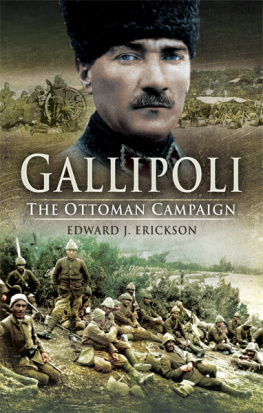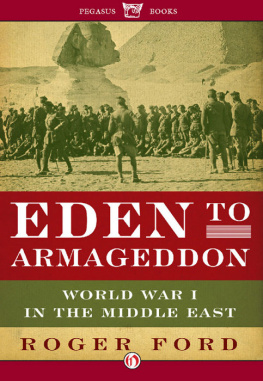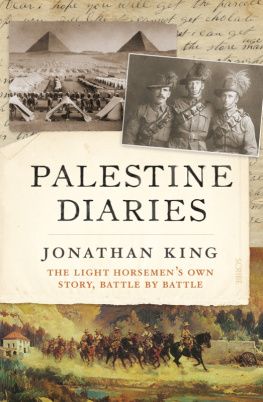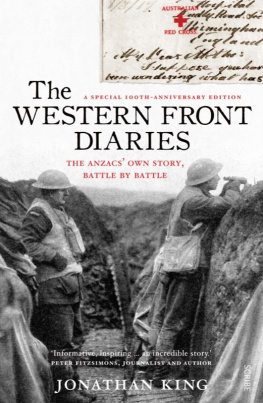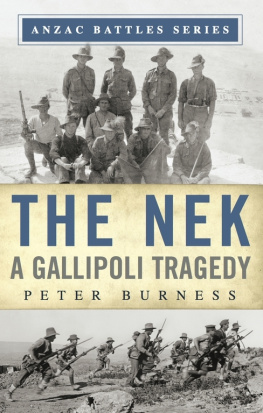Abbreviations
| AIF | Australian Imperial Force |
| ALH | Australian Light Horse |
| AMR | Auckland Mounted Rifles |
| CMR | Canterbury Mounted Rifles |
| CWGC | Commonwealth War Graves Commission |
| CYC | Canterbury Yeomanry Cavalry |
| DMC | Desert Mounted Corps |
| EEF | Egyptian Expeditionary Force |
| ICC | Imperial Camel Corps |
| LH | Light Horse |
| MEF | Mediterranean Expeditionary Force |
| NCO | Non-commissioned officer |
| NZEF | New Zealand Expeditionary Force |
| NZMFA | New Zealand Mounted Field Ambulance |
| NZMGS | New Zealand Machine Gun Squadron |
| RHA | Royal Horse Artillery |
| WMR | Wellington Mounted Rifles |
| YMCA | Young Mens Christian Association |
| Z-Day | The day that an operation was scheduled to begin |
Key for all maps

Authors note
THERE IS A surprisingly large amount of written and photographic material available relating to the Middle East campaign fought by the New Zealand Mounted Rifles Brigade. Archives New Zealand holds most of the relevant regimental, brigade, and divisional war diaries, along with hundreds of original orders, reports, maps, signals, personnel files and copies of official and personal letters.
The other vital primary reference sources are the photographs, diaries and letters left by the men who fought in the campaign. For this book I have drawn from the letters, diaries, published memoirs, and interview records of nearly 60 New Zealanders, plus a number of Australians and Britons. Letters and diaries are most reliable for those events that the writers witnessed, and often omit discussion of the more unpleasant aspects of the war. The reminiscences of First World War veterans recorded by the Oral History Centre of the Alexander Turnbull Library are useful sources, although the effects of failing memories and post-war influences mean that caution is required in their use. The other key personal records in this book are the photographs. In New Zealand, Australia and elsewhere, there are hundreds of photographs taken by soldiers and official photographers during the Middle East war. Although those from small personal cameras often suffer in comparison with those taken by professional photographers, I have deliberately used many for this book, as most have never been published before. Taken collectively and used with care, they add vital colour and detail to the often dry and sometimes sparse official records.
There are two categories of published accounts dealing with the Middle East campaign: those written immediately after the war by veterans or war correspondents, and those written by historians years or decades later. Three New Zealand regimental histories and a popular campaign history of the New Zealand Expeditionary Force (NZEF) in the Middle East appeared soon after the war, along with official British and Australian accounts. These books are valuable sources of information, but they are becoming scarce and inaccessible to the general reader, and they do not always tell the whole story. Unpalatable facts were often left out and criticism of senior Allied commanders was seldom permitted. There is an ever-increasing number of new books that deal with the Middle Eastern campaign of the First World War, but few of them pay much attention to New Zealands contribution. Some modern authors who should know better commit the inexcusable sins of assuming that New Zealands mounted riflemen are interchangeable with Australias light horsemen, or of simply ignoring the two middle consonants in the word Anzac.
It is impossible to write credible military history unless you are familiar with the ground. I had access to a number of good maps relating to the Middle East campaign. More importantly, I was able to walk over most of the actual battlefields in Egypt, Israel and Jordan and visit nearly all the cemeteries in which New Zealanders lie buried.
I do not discuss the operations of other Allied forces in detail, or dwell on strategic or policy matters, except to provide context for the activities of the New Zealanders. The narrative focuses almost entirely on the fighting regiments and squadrons of the NZMR. This is partly out of choice, and partly out of necessity. I had access to very few records from Turkish or German soldiers, and to none from the Egyptian, Arab, Jewish and other inhabitants of the lands across which the combatants fought, so their stories are not told here.
In keeping with contemporary usage, I refer to the mounted riflemens enemy as Turkey, despite the fact that the Ottoman Empire (to use its correct title) included many other ethnic groups. In order to make the quotations more readable, I have corrected obvious spelling and grammatical errors, standardised the spelling of place names and occasionally changed the case of the initial letter of a quotation to make it fit the structure of the associated sentence.
Devils on Horses was written with the help of many people. For their assistance in the field phase of the project, I thank Lloyd Mendes, who accompanied me on several visits to Sinai battlefields, and Israeli Colonel (Retired) Itzhak Brenner, who showed me the Ayun Kara battlefield. Closer to home, my former wife Jenny taught me the basics of riding and horse management.
In addition to the archives listed in the bibliography, I conducted research at the Library of Congress, the National Defense University and the Pentagon Library in Washington DC, and with the staff of the Commonwealth War Graves Commission in England. In New Zealand, the staffs of the Defence Library, the New Zealand Society of Genealogists, the Royal New Zealand Returned and Services Association, the Trentham Camp Library and the University of Otago Library all provided valuable help.
The following individuals made special contributions. Noel Taylor tirelessly tracked down diaries, letters and photographs on my behalf. Mark Rhodes generously permitted me to publish photographs from his grandfathers magnificent album. Mike Smith allowed me to refer to the manuscript of his forthcoming biography of Major General Sir Edward Chaytor, as did Lieutenant Colonel Peter Wood with his thesis on the tactics of the NZMR Brigade. Dr Christopher Pugsley, Mike Smith and Lieutenant Colonel Paul van den Broek reviewed the manuscript. Gal Shaines photographs and descriptions of Ayun Kara and other battlefields in Israel were a great help, as was his review of my account of the Ayun Kara battle. Barry OSullivans knowledge of NZMR uniforms and equipment was very helpful. Thanks also to Graeme Barber, Greg Bradley, Rob Burrowes, Tony Edwards, Joe Evans, Patricia Forsyth, Captain Ian Hunter, RNZIR (Retired), Windsor Jones, Matthew OSullivan, Jeff Pickerd, Matt Pomeroy, Richard Shenley, Captain Simon Strombom, Bill Wilson and Michelle Winn, for their assistance with photographs. Professor Noel Dunbar and Phil Deed generously granted me access to their rare and extensive collections of First World War maps, and Bill Woerlee sent me copies of several contemporary map sheets. Steve Becker, Geof Mansfield, John Ruf, Geoff Smith and the other knowledgeable contributors to the Internet discussion forums listed in the bibliography were useful sounding-boards and valuable sources of information. Lastly, thanks to Steve Butler, Peter Curtis, Egidia DesRoches, David Lackey, Lynne Mackie, John McDonald, Susanna Norris, Brigadier Kevin Riordan and Simon Wilson.
Next page
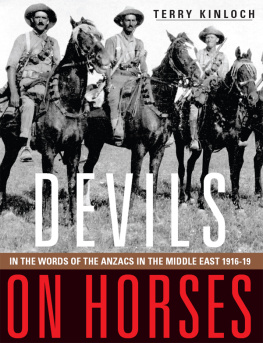
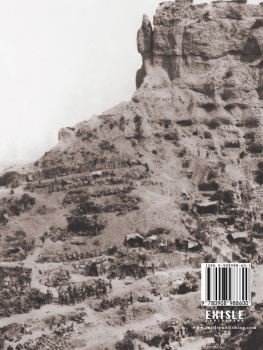
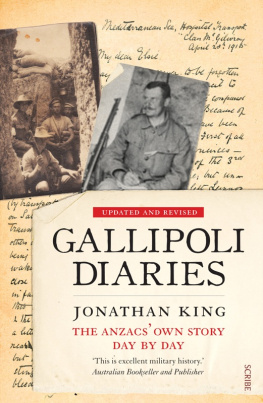
![Lt Col C. G. Powles - THE NEW ZEALANDERS IN SINAI AND PALESTINE [Illustrated Edition]](/uploads/posts/book/399129/thumbs/lt-col-c-g-powles-the-new-zealanders-in-sinai.jpg)

